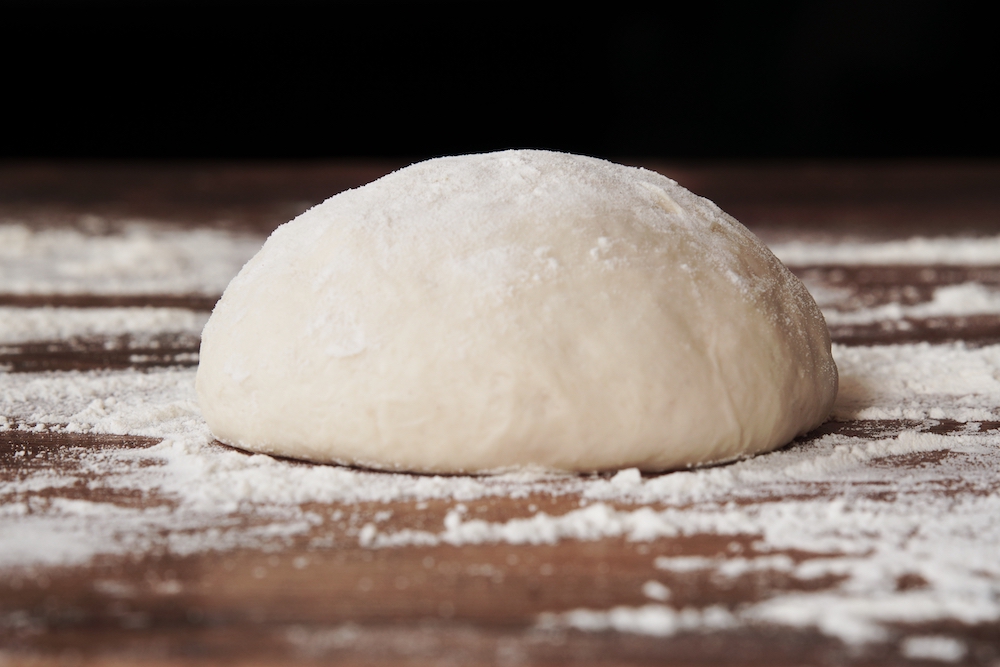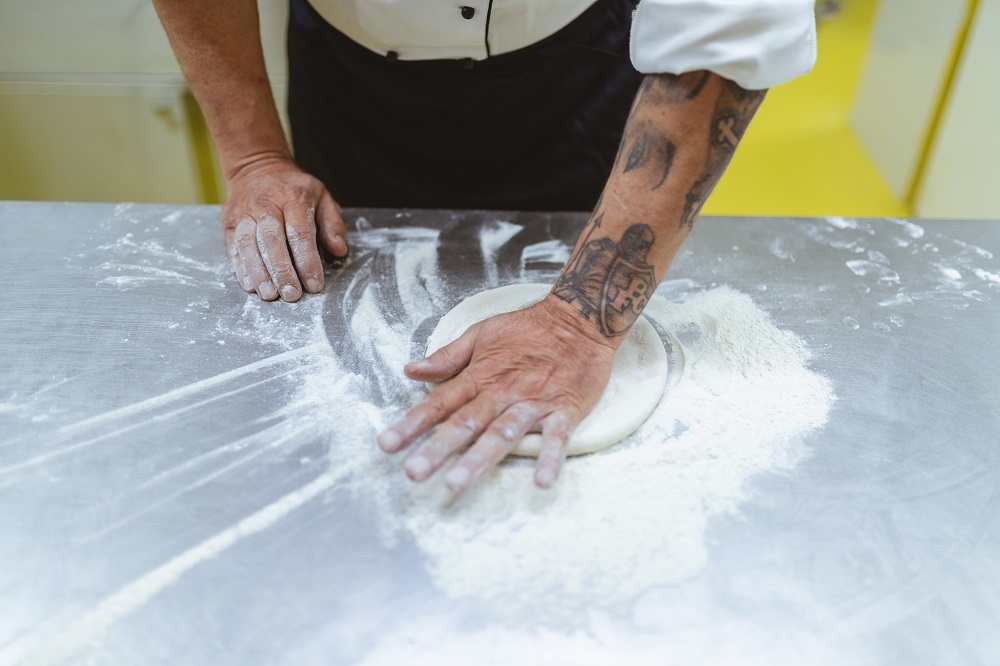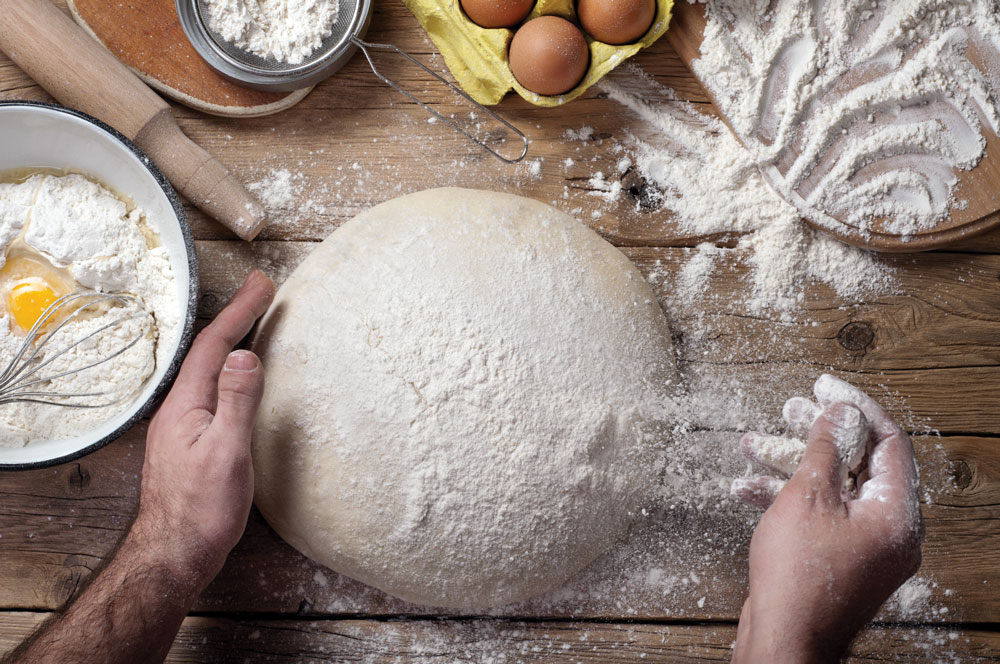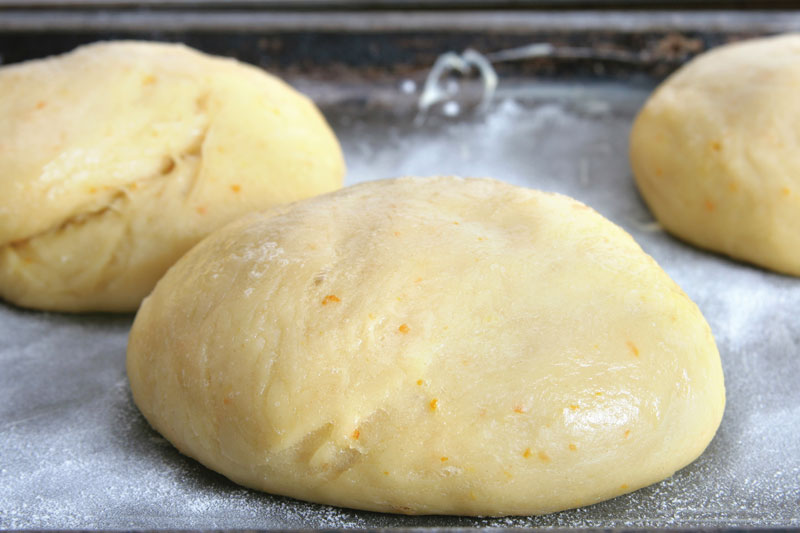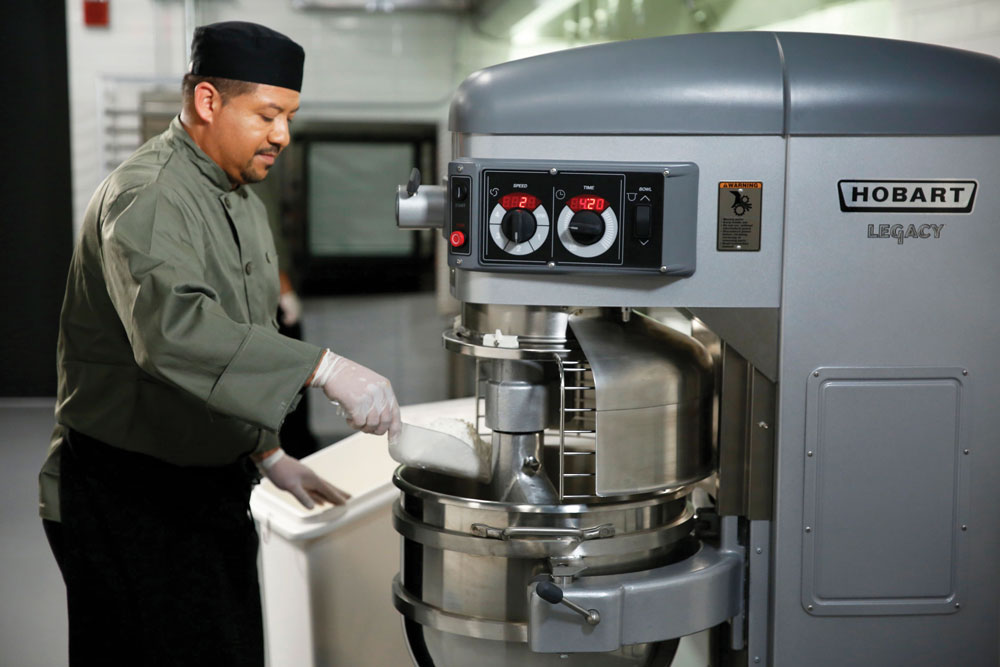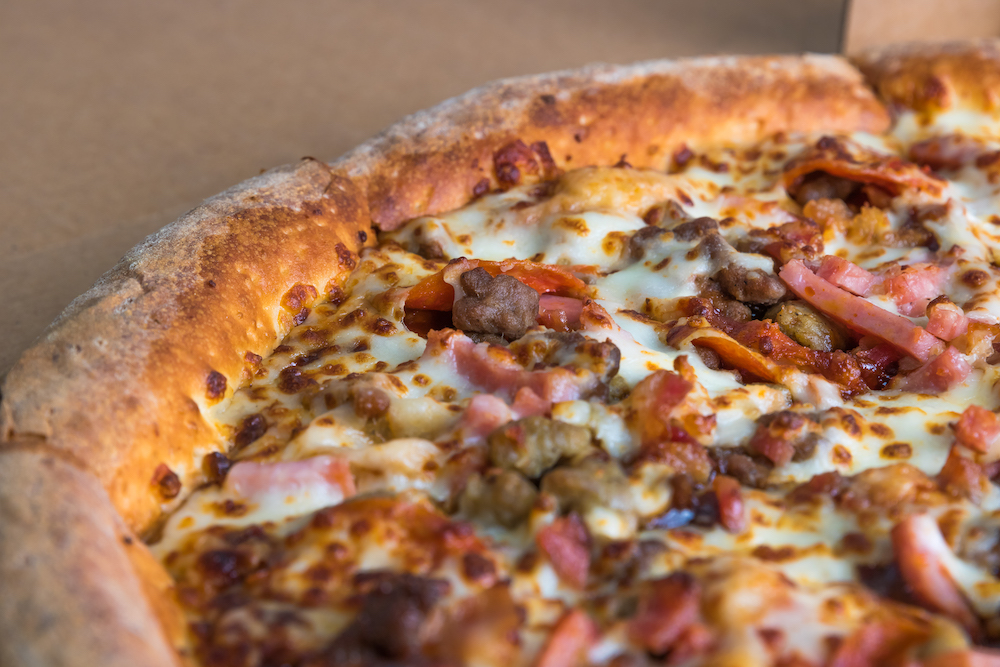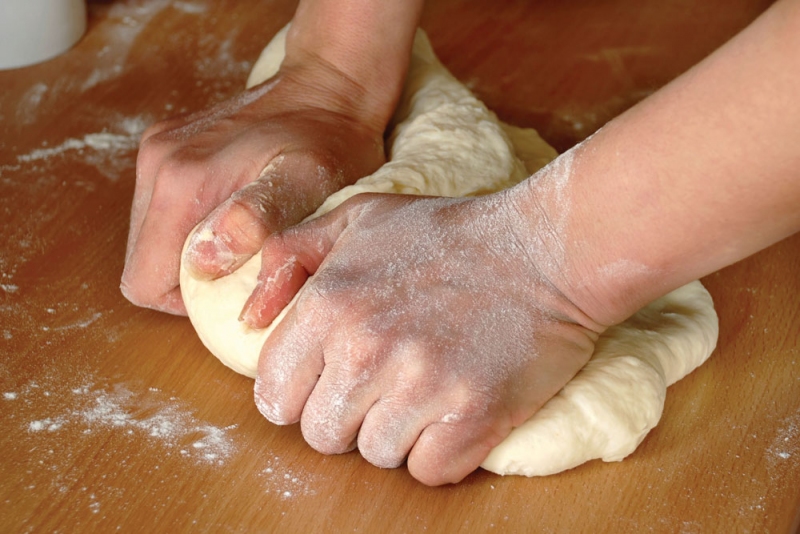QUESTION:
How does dough mixing time affect my finished crust quality?
ANSWER:
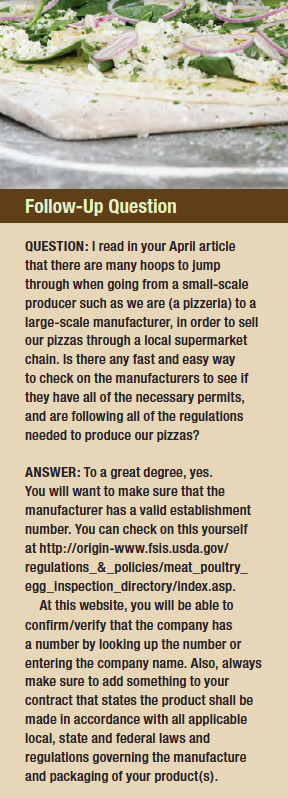
I’ve found that, as a rule, the longer the dough is mixed, the more gluten is developed in the flour, causing the finished-crust crumb structure to begin to take on more of a breadlike characteristic than the open, coarse structure that we normally see when we look at a great pizza crust. Because of this, short mixing times are the order of the day when it comes to mixing pizza dough. But how short are we actually talking about? Mixing times can be as short as 45 seconds, in cases where we are looking for a biscuit-type (baking powder biscuit) finished crust characteristic with a very open crumb structure and a flaky and tender eating characteristic, or as long as 15 to 20 minutes when we’re looking for more of a breadlike crumb structure. The middle ground that most of us are looking for is between 8 and 12 minutes of mixing, or just enough mixing to give the dough a smooth, satiny appearance with a surface skin that doesn’t readily tear when stretched. This provides for decent handling when you’re scaling and balling the dough, while still giving a desirable, open, somewhat coarse crumb structure to the finished crust.
QUESTION:
Our dough formula presently contains olive oil, but we are considering switching to butter. Do I use the same amount of butter as olive oil?
ANSWER:
The short answer to your question is yes; use the same amount of butter as you do olive oil. However, technically, butter is made up of roughly 20% water and 80% fat, whereas oil is 100% fat. This means that by using butter at the same level as you had been using olive oil, you will be adding 20% less fat to the dough formula. To correct for this, you would need to add 20% more butter than olive oil. The same rule holds true for margarine, which also contains 20% water and 80% fat. Shortening, on the other hand, is 100% fat, so a pound of shortening provides the same amount of fat as a pound of oil. With all of that said, the reason for the short answer of “yes” is because, for the most part, oil levels in pizza dough are typically around the 2% to 4% level, with some even lower. If you were to replace 2% oil with the same amount of butter, your total fat content contributed by the butter would be 1.6%, as opposed to 2% contributed by the oil. I seriously doubt that anyone would detect such a small difference in fat content of the finished crust/pizza.

